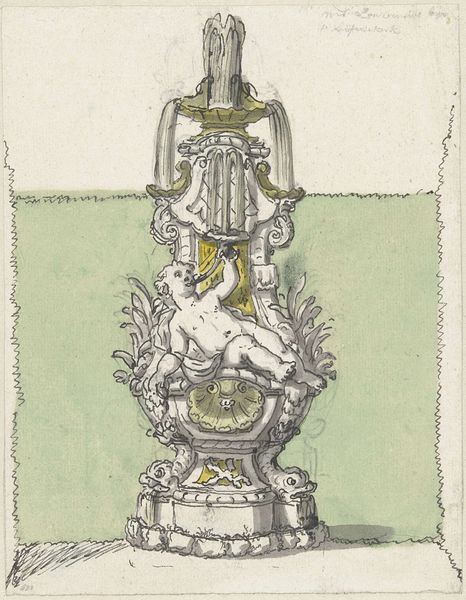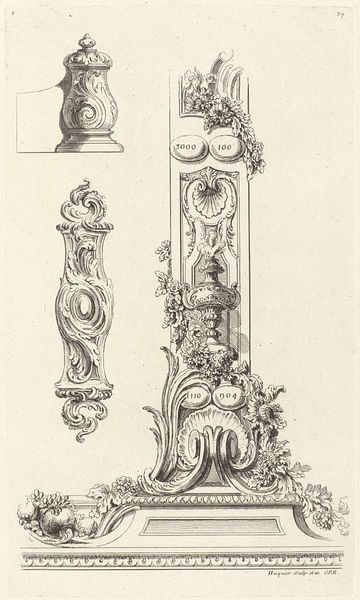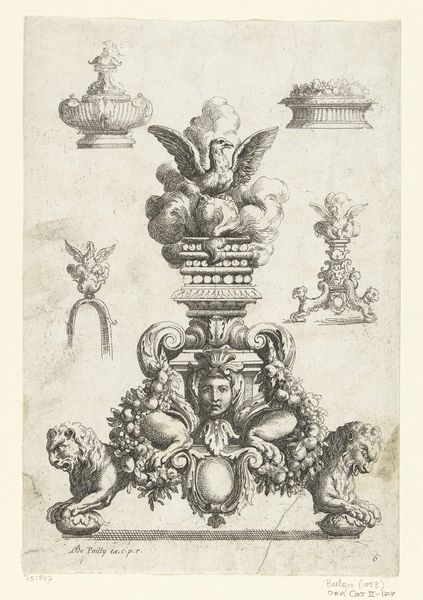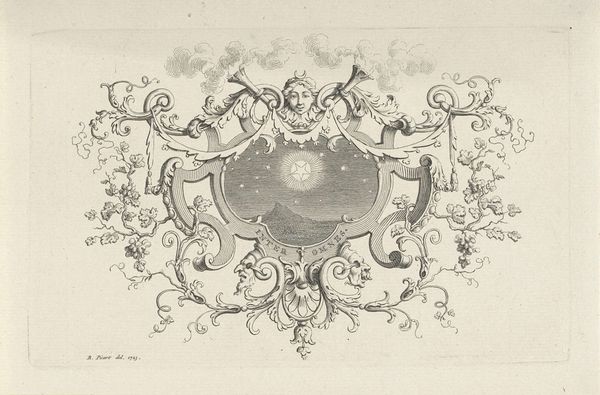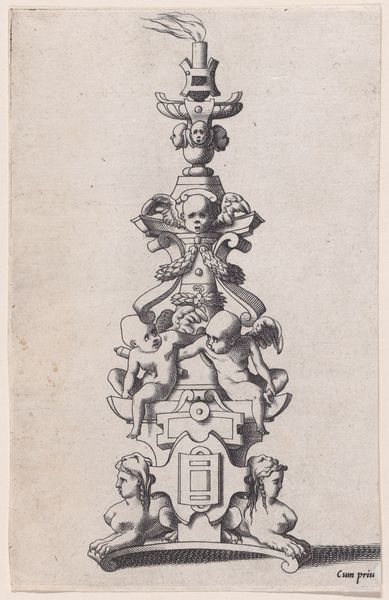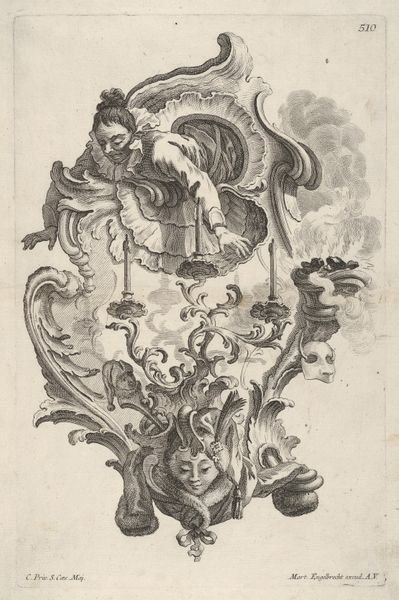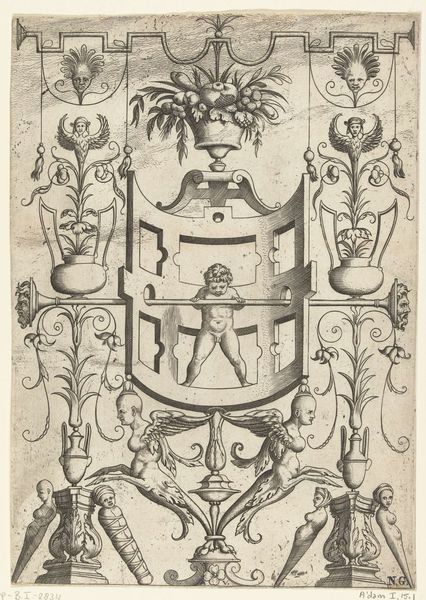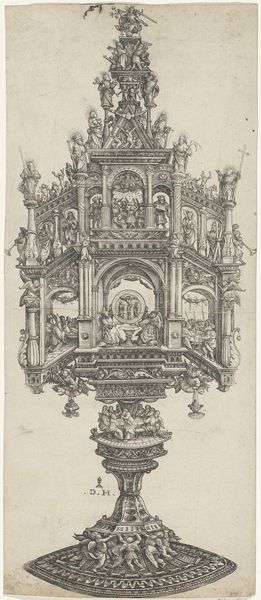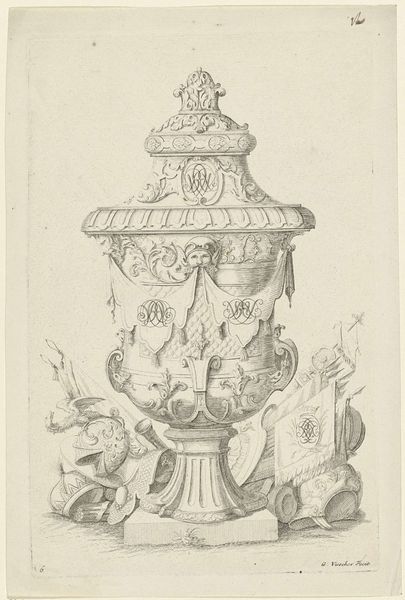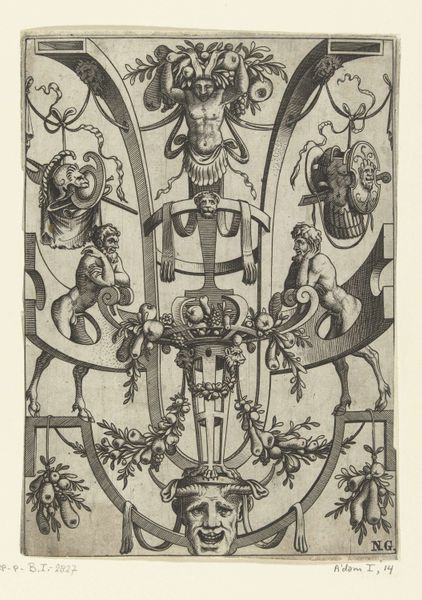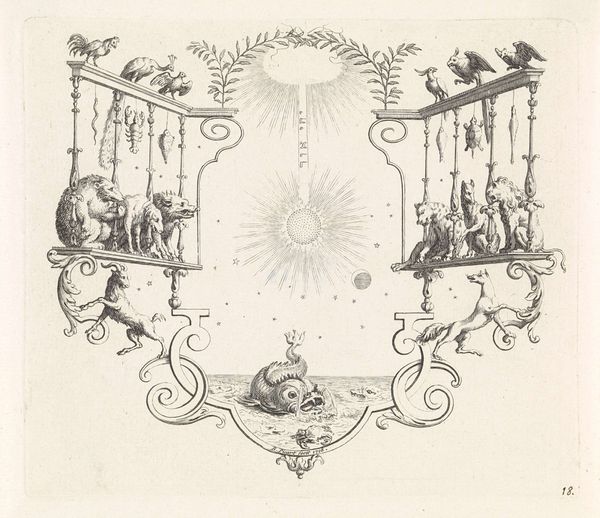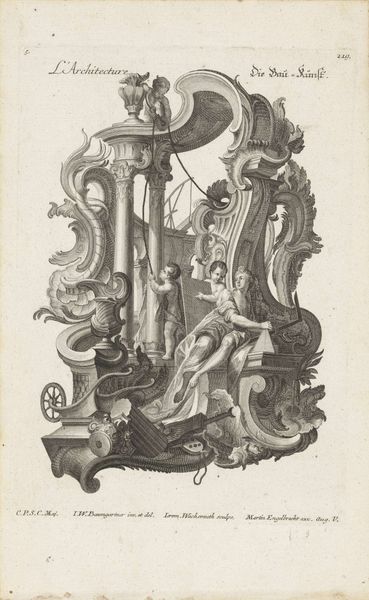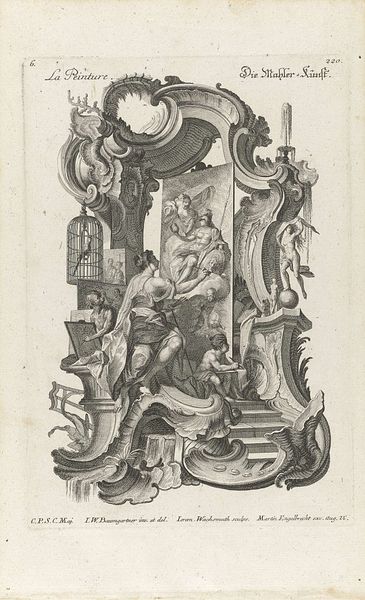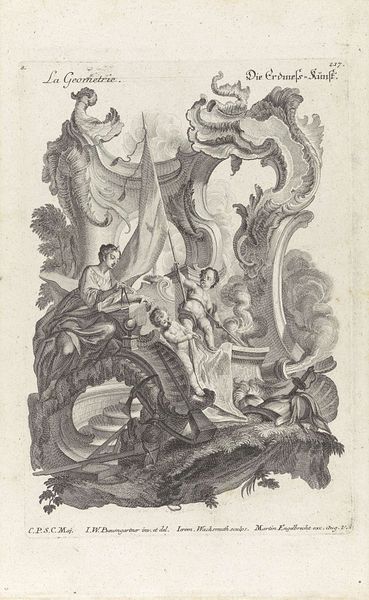
drawing, ink
#
drawing
#
baroque
#
pen sketch
#
landscape
#
figuration
#
ink
#
pen-ink sketch
#
pen work
#
sketchbook drawing
Dimensions: height 368 mm, width 244 mm
Copyright: Rijks Museum: Open Domain
Curator: This intricate pen and ink drawing is entitled "Ontwerp voor een fontein," or "Design for a Fountain," attributed to Daniël Marot, dating sometime between 1705 and 1769. It embodies the exuberance of the Baroque style. Editor: My initial impression is that it has an almost overwhelming sense of verticality, accented with opulent details. The fountain appears both playful and monumental. Curator: Indeed. Notice how Marot employs hatching and cross-hatching to create a sense of depth and volume, defining the complex curves and ornate details of the fountain. The cherubic figure at the center strikes a dramatic pose, dominating the composition. It introduces dynamism into the static material. Editor: From a materialist perspective, it would be interesting to consider the accessibility of such a design. The proposed construction necessitates not only vast material resources, specifically types of stone, and the labor of artisans skilled in carving and hydraulic engineering, but it's an advertisement of such. Curator: Quite. The symbolism here is unmistakable. The dolphins, shells, and flowing water evoke themes of abundance and power, classical allusions of status, while the cherub can perhaps be seen as a symbol of divine favor. Semiotically speaking, each element contributes to a narrative of idealized beauty and aristocratic privilege. Editor: The artistic labor required to first conceive and render it, followed by the immense labor necessary to build such an ostentatious object—the quarrying, the carving, and transport of materials—highlights how much human effort becomes embedded, even immortalized, in the final product. Curator: An astute observation. Marot masterfully uses light and shadow to give the design a sense of three-dimensionality, inviting the viewer to imagine the fountain in all its glory, a synthesis of artistic vision and social statement. The ink and paper create this persuasive image that goes beyond its simple materials. Editor: Studying these fountains in the present allows us to look beyond a wealthy commission or patron, recognizing that we can learn so much more by studying the physical means required to get the materials here in the first place. Curator: Precisely. "Design for a Fountain" provides a fascinating intersection of visual and tactile culture, leaving us to ponder the relationships among art, nature, and society during the Baroque period. Editor: I think considering how material needs defined aesthetic output adds another, necessary, layer to it all.
Comments
No comments
Be the first to comment and join the conversation on the ultimate creative platform.
